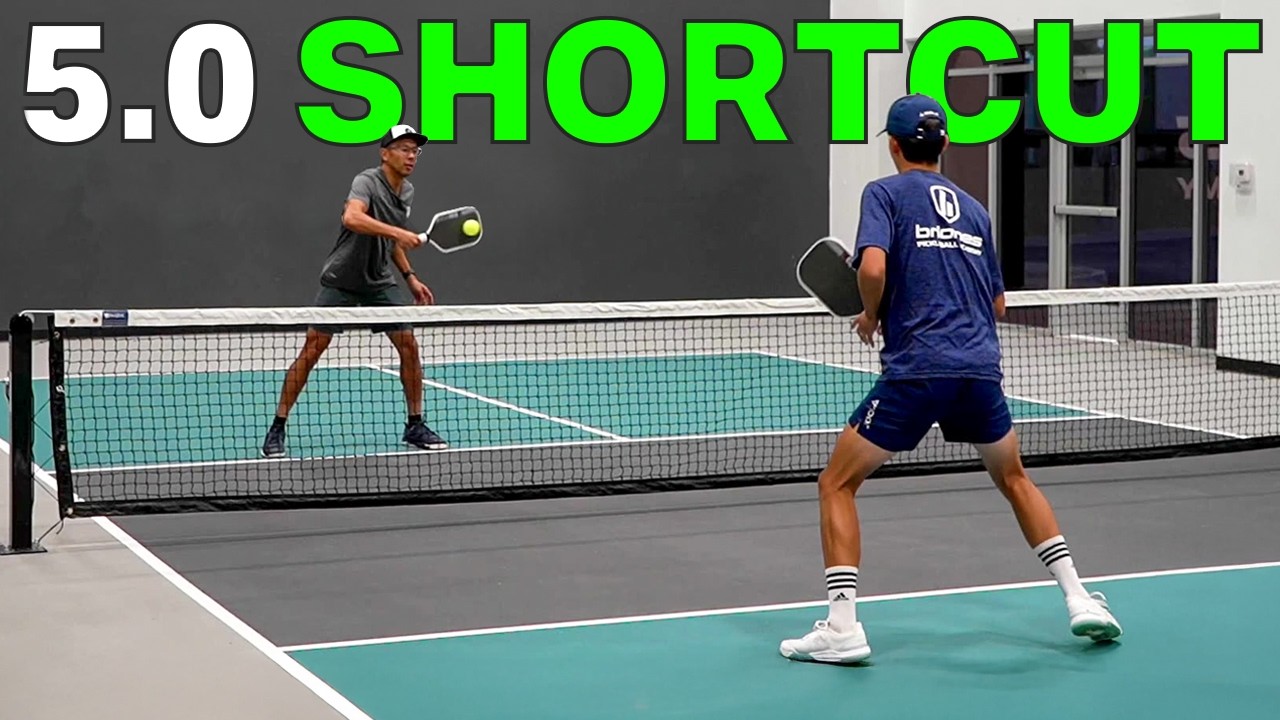By serving to areas that force lateral movement, you're essentially adding time to your opponent's journey to the net. That time is everything.
You're standing at the baseline, ball in hand, and you've got maybe three seconds to think about where this serve is actually going.
Most players don't think about it at all. They just hit it somewhere in the service box, aim kind of deep, and hope for the best. But top players understand that serving isn't about power or spin or any of that flashy stuff. It's about geometry.
It's about forcing your opponent to move in a way that puts them at a disadvantage before the rally even starts.That's exactly what Tanner Tomassi breaks down in a recent video that's worth the 60 seconds it takes to watch.
The Real Goal of Your Serve
Here's the thing most recreational players get wrong: they think the serve is about winning the point outright. It's not. Not even a little bit.
Your entire goal when serving should be to make your opponent take longer getting to the kitchen line. That's it. That's the whole game.
The way you accomplish this is beautifully simple, though it requires a shift in how you think about court positioning.
You want to make your opponent take their first step anywhere but forward.
If you hit a serve that forces them to move laterally, or diagonally, or even backward, you've already won the mental battle. And very likely the point.They're not gliding smoothly to the kitchen line. They're scrambling.
Advanced Pickleball Strategies: 3 Tactics to Reach 5.0 Fast
Getting to the next level isn’t about one magic technique or one breakthrough moment. It’s about understanding that pickleball has layers – and you’ve got to master them all to be great.
 The Dink PickleballThe Dink Media Team
The Dink PickleballThe Dink Media Team

Good Serves vs. Bad Serves
Tanner demonstrates this with two contrasting examples, and the difference is stark.
- A good serve forces the opponent to move sideways first, then up toward the kitchen. That extra lateral movement? That's your advantage. That's the milliseconds you need to get to the net and take control of the point.
- A bad serve is one where the opponent can run straight through it to the kitchen line. When that happens, they're up there fast, and suddenly you're playing defense instead of offense. You've handed them the advantage before the rally even started.
Why Pro Pickleball Players Are Choking Up on Their Paddles
They can use anticipation and footwork to compensate for the slight reduction in reach while the vast improvement in maneuverability and hand speed is worth its weight in gold.
 The Dink PickleballAlex E. Weaver
The Dink PickleballAlex E. Weaver

Heads up: hundreds of thousands of pickleballers read our free newsletter. Subscribe here for cutting edge strategy, insider news, pro analysis, the latest product innovations and more.
Why This Matters More Than You Think
This isn't just about being clever with placement. It's about understanding the fundamental rhythm of pickleball.
The kitchen line is where points are won and lost. The team that gets there first, in a stable position, typically controls the point. By serving to areas that force lateral movement, you're essentially adding time to your opponent's journey to the net. That time is everything.
Now think about your own game. When you're serving, where are you actually aiming? It's not enough to just aim deep anymore. When you start thinking about serve placement as a strategic tool, suddenly you've got a whole new dimension to your game.
Anuncie Aqui / Advertise Here
Sua marca para o mundo Pickleball! / Your brand for the Pickleball world!

 English
English  Spanish
Spanish  Portuguese
Portuguese  German
German  Italian
Italian  Japanese
Japanese  French
French  Polish
Polish  Russian
Russian  Netherlands
Netherlands  Hungarian
Hungarian  Turkish
Turkish  Videos
Videos 








 English (US) ·
English (US) ·  Portuguese (BR) ·
Portuguese (BR) ·